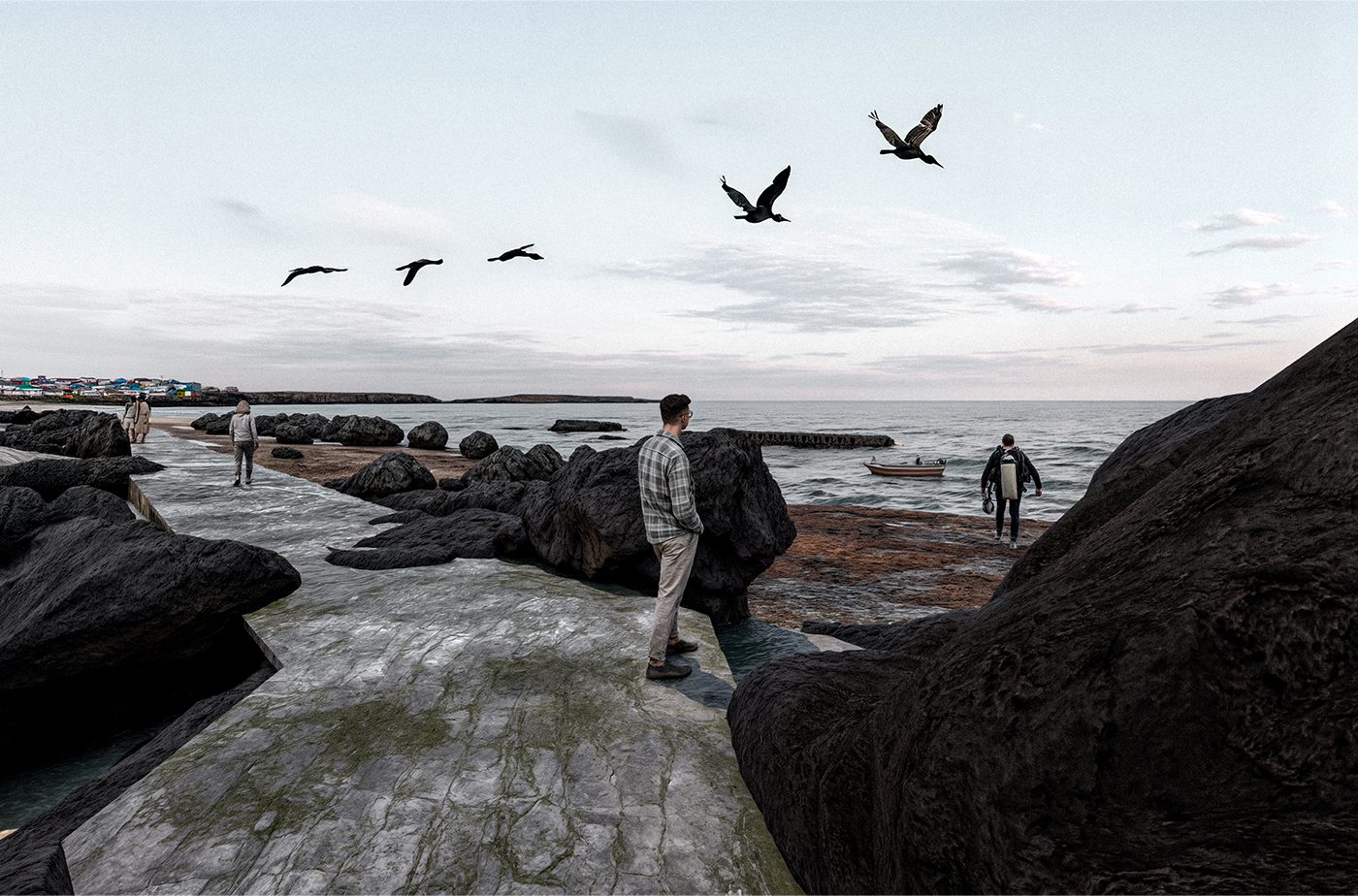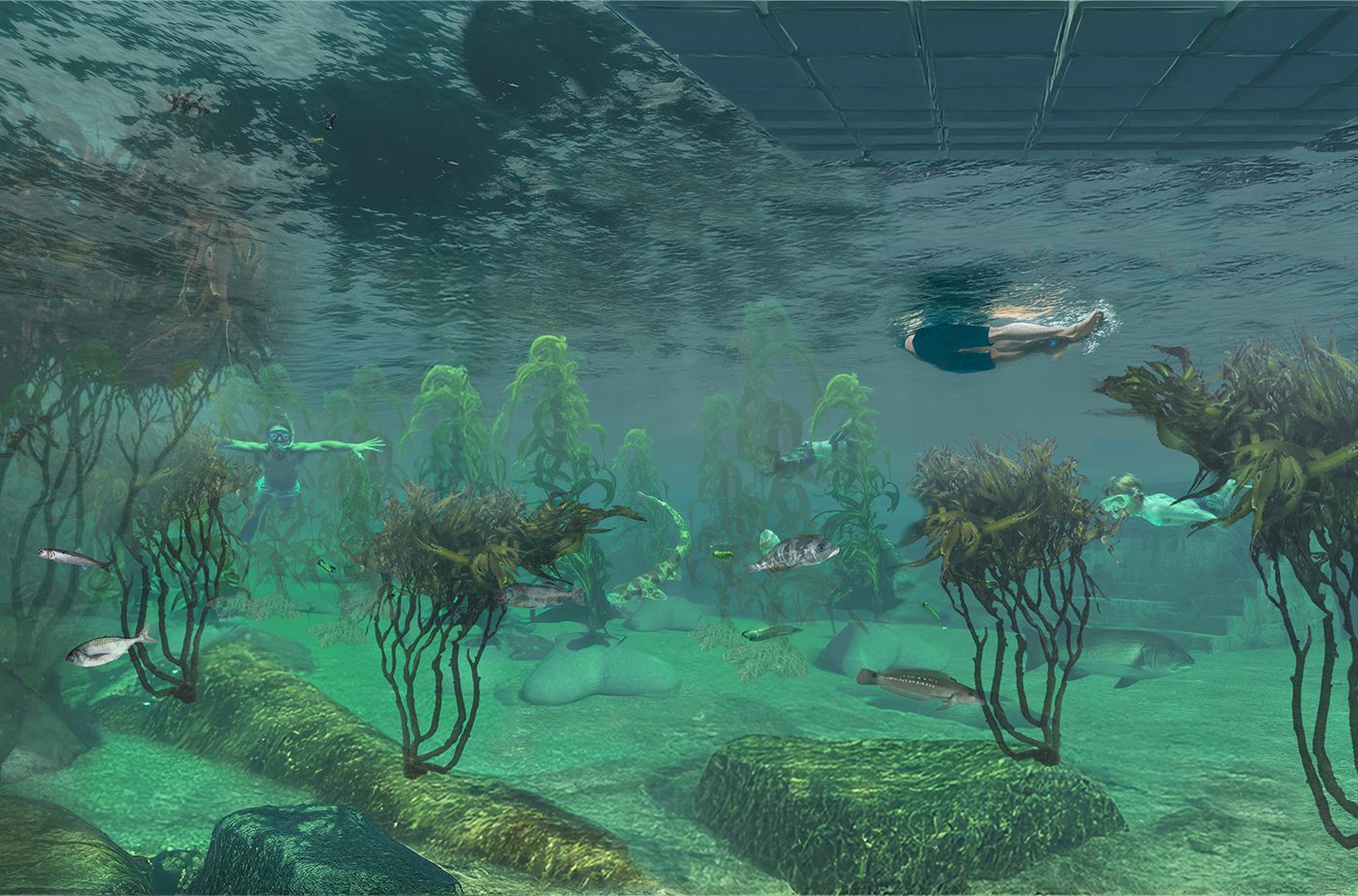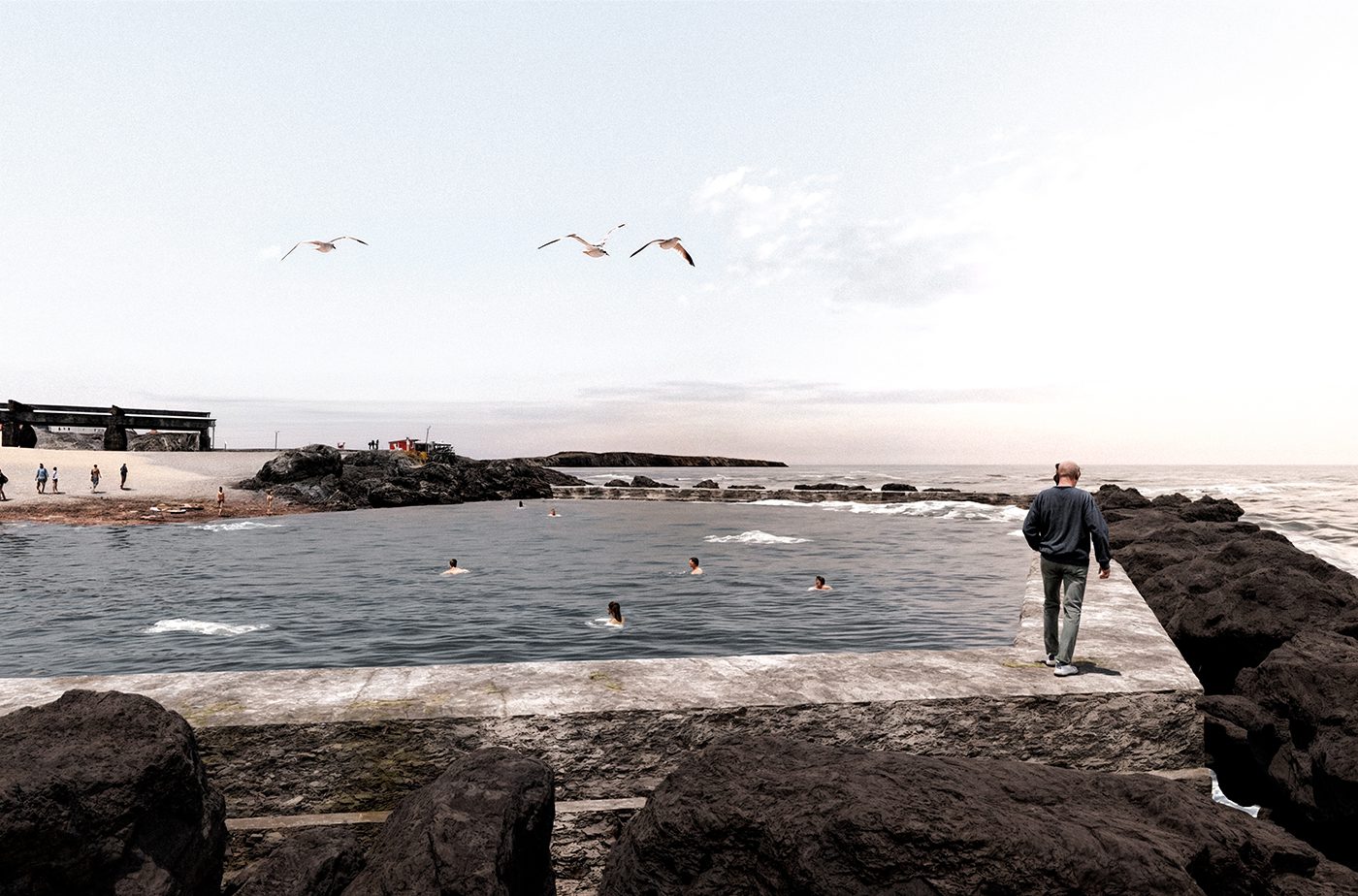Project implementation: Chile
Project development: Chile
Student Isidora Soto,
Guidance: Ximena Arizaga and Osvaldo Moreno
The Humboldt Archipelago's geographical qualities offer refuge and foster significant marine biodiversity, thanks to an underwater canyon that ends between the coast of Chañaral de Aceituno and the Chañaral Island Marine Reserve. Whales that roam the oceans visit this location annually to feed. Due to its ecological significance, oceanographer Sylvia Earle named it a global hope spot.
In a territory historically inhabited by cultures linked to maritime practices, hundreds of tons of brown algae are currently extracted directly from its ecosystem each month. Exports are taking place on an industrial scale, driven by the growth in international demand over the past two decades.
Caleta Chañaral de Aceituno doesn't reflect its importance for conservation. It lacks adequate infrastructure to accommodate the approximately thirty thousand visitors who arrive each season, fostering a distorted view of the landscape as a tourist destination focused on whale watching. In this context, the site requires an integrated space that supports productive and tourist activities while protecting marine habitats, ensuring the continuity of a valuable landscape for local, national, and global populations.
Whale watching, marine forests, and fishing traditions coexist in the intertidal zone, defined as a mediating area between landscape scales. It is in this space that a park is proposed, extending from the sea—in marine forests on rocky outcrops—to the land, in boarding areas, seaweed accumulations, and spaces for locals and tourists to socialize.
Their strategies include: first, creating a pathway along the rocky coastline of Chañaral de Aceituno, transforming the rocks into an accessible path connecting sea and land; second, regenerating intertidal ecosystems with marine gardens where macroalgae can be cultivated, reproduced, and used as structural plant material; third, cultivating brown algae for artisanal fishing, contributing to local and oceanic ecological balance.
Breakwaters with ecological tetrapods are proposed, fostering the integration of organisms and serving as habitats. Inspired by the Living Breakwaters project by SCAPE, the proposal stands out for incorporating macroalgae as stabilizing agents, expanding the area conducive to their growth and offering more rocky surface for their attachment. This same structure transforms along the intertidal zone, creating spaces where the tide allows for recreational, productive, and sociocultural uses. This would mitigate anthropogenic impacts by connecting marine biodiversity to marine-related practices.




